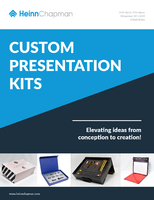Bayer MaterialScience Highlights UVA Cure Technology for Aircraft Battlefield Composite Repair
Pittsburgh, February 16, 2009 - The advantages of using UVA cure technology to make battlefield composite repairs more timely and economical will be the focus of a presentation by Bayer MaterialScience scientists at RadTech UV/EB West. The conference takes place February 17-18 at the Sheraton Gateway Hotel, LAX, in Los Angeles. The presentation will be given on February 18 at the UV/EB Technology for Aerospace and Defense Applications session by Mike Dvorchak, strategic technology manager, UV cure oligomers and PUDs government programs and Alan Bushmire, senior technician specialist, Government Services Group, Bayer MaterialScience LLC. Other authors include: Jan Clatty, formerly of Bayer MaterialScience LLC and Lindsey Bernier, Angela Lynn, Chris Maganello, Hilary McWilliams, all of Carnegie Mellon University.
Currently, structural composite applications such as military aircraft are repaired using traditional two component resins such as epoxy, polyester, silicone, polybutadiene, polyimide and cyanate ester. A technology developed by Bayer MaterialScience would allow battlefield repairs to be made using the same UVA lights that were originally developed for the automotive refinish industry. The repair would allow aircraft damaged by ballistic holes caused by ground fire or shrapnel to quickly return to service. Permanent repair would take place at a later time. UVA curable resins that can be utilized for structural composites include: epoxy ester acrylates, polyether acrylates, unsaturated polyesters in reactive thinner, urethane acrylates and NCO bearing urethane acrylates, according to the authors.
"Using UVA cure technology, repairs can be made within minutes, instead of waiting 24-72 hours 'cure to fly' that the traditional epoxy system offers," said Dvorchak. "UVA cure technology also has no pot life issues and does not require vacuum bagging to eliminate oxygen inhibition." Dvorchak also noted that one component UVA cure technology does not use harmful volatile organic compounds.
The presentation details the process for repairs, which begins with sanding the damaged area and wiping with solvent to remove grease and debris. Then, a composite patch is prepared by:
o Adding resin to the mold and laying down the first layer of mat
o Rolling out the resin on the mat
o Repeating until desired mat loading is reached on top of the sample
o Applying PC sheet to the top layer to squeeze excess resin out of the part and supplying finished look to surface repair
o UVA cure.
Dvorchak suggested additional research be completed to investigate the use of the UVA resin system to reach performance demands in a high-heat environment and to test the corrosion resistance of conventional aerospace metals with the UVA system.
Bayer MaterialScience LLC is one of the leading producers of polymers and high-performance plastics in North America and is part of the global Bayer MaterialScience business with nearly 15,400 employees at 30 sites around the world and 2007 sales of 10.4 billion euros. Business activities are focused on the manufacture of high-tech polymer materials and the development of innovative solutions for products used in many areas of daily life. The main segments served are the automotive, electrical and electronics, construction, medical, and sports and leisure industries. Our inorganic basic chemicals unit produces chlorine and related essential products for the chemicals industry.
Bayer Corporation, headquartered in Pittsburgh, is a subsidiary of Bayer AG, an international health care, nutrition and high-tech materials group based in Leverkusen, Germany. In North America, Bayer had 2007 net sales of 8.1 billion euros and employed 16,800 at year end. Bayer's three subgroups, Bayer HealthCare, Bayer CropScience and Bayer MaterialScience, improve people's lives through a broad range of essential products that help diagnose, prevent and treat diseases; protect crops and enhance yields; and advance automobile safety and durability.
Contact:
Bill Allan, Phone: 412-777-5200
E-mail: bill.allan@bayerBayer MaterialScience.com
For more information about UV-curable coatings technologies or other products from Bayer MaterialScience, call 1-800-662-2927, e-mail naftainfo@bayerbms.com or visit www.bayermaterialsciencenafta.com.




